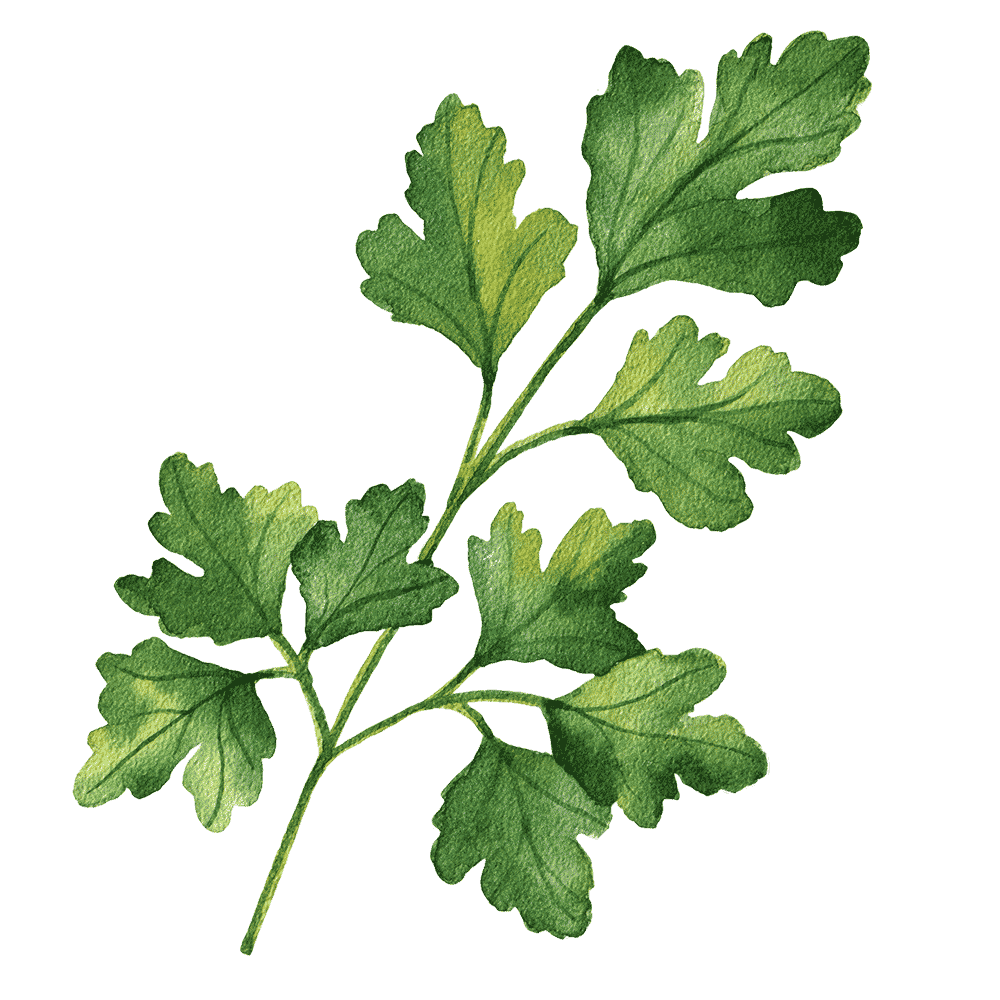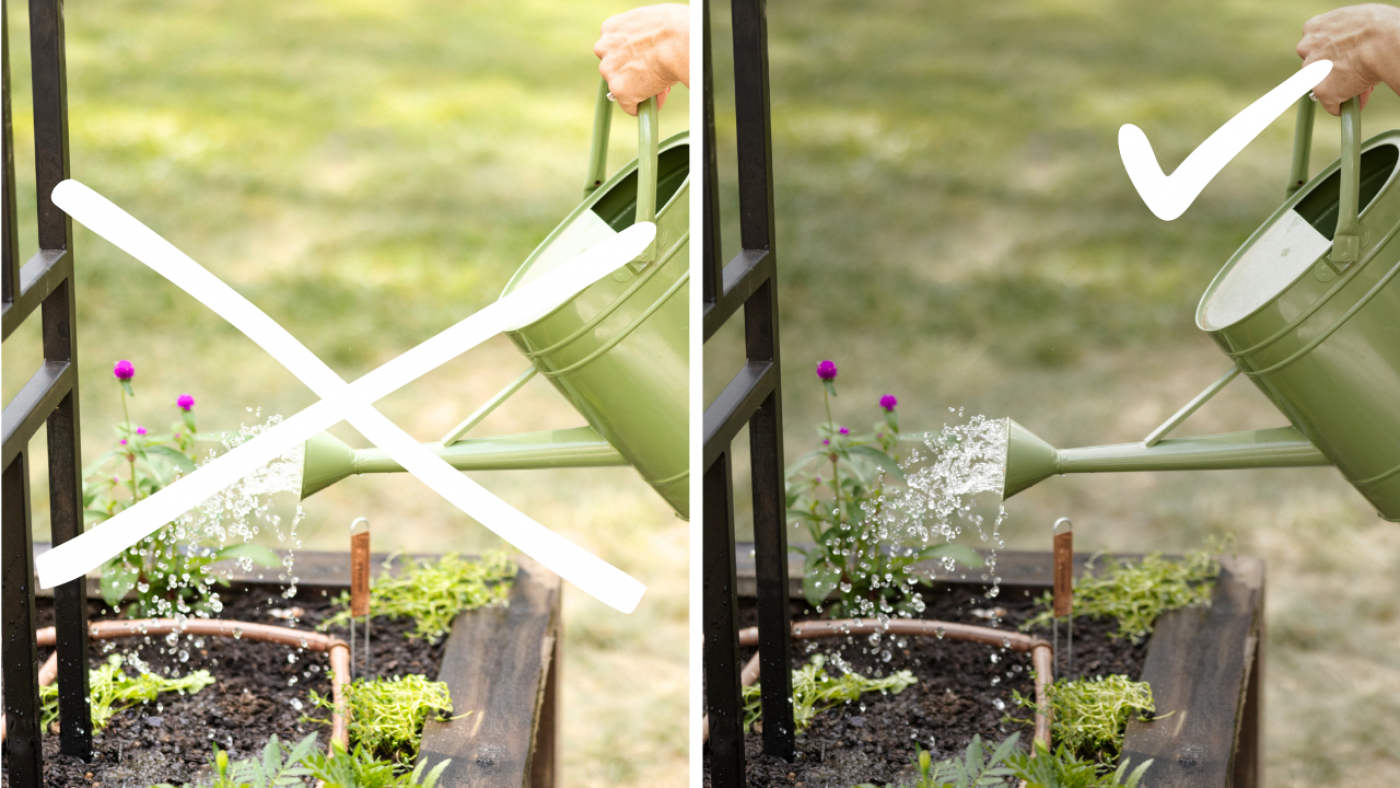Save Some Money on Your Water Bill
I recently heard someone say they'd never have a vegetable garden because it guzzles so much water it's really just not even worth the effort or the money. What a shame that people actually believe this!
I'm here to tell you it's possible to have a vegetable garden without doubling or even tripling your water bill. Obviously, you'll have to water your plants if you're not getting at least 1 inch of rain a week. Plants need water to grow and produce. But there are methods you can use to reduce how long you need to run your irrigation system or water by hand.
Here are five ways to reduce how much supplemental water you have to add to your garden space.
Prefer to Watch?
Method Number One
Plant for the Current Growing Season
Oftentimes, the reason we feel like we're watering and watering is because we're stretching the growing seasons too much. We're trying to grow a plant that belongs in a cooler season when it's just too warm.
My first summer gardening in Houston, I tried to grow tomatoes from June to August. It was extremely hot, and we had very little rain. I'd head outside to water my thirsty tomatoes every single morning, but they still struggled. Even with all that watering and care, they produced very little fruit.
That's how I learned that summer is not the time to grow tomatoes in a hot climate. Tomatoes just aren't suited for week after week of temps in the 90s. Tomatoes actually grow best in the spring and fall in Houston. During those seasons, the temperatures are a little bit lower and there's more rainfall, so tomatoes don't need nearly as much supplemental water to stay happy.
Instead of pushing your plants outside their preferred temperature ranges, rotate your plants with the seasons. I started growing sweet potatoes, okra, eggplants, and hot peppers—all plants that actually thrive in the hot, dry season. By planting the right plants at the right time, I significantly reduced the amount of water I had to use and increased the production from my garden.


Method Number Two
Plant Intensively
I learned about this method when I was traveling to Big Bend National Park with my family in the middle of July. It was about 105°F, and of course, this park is in the middle of a desert. No one was watering Big Bend's plants, and yet they were thriving. How is this possible?
I realized the plants can survive such harsh conditions because they're growing so close together. I started mimicking this in my own garden space, with great success. Within 6 weeks of planting my garden for the season, I don't want to see any bare soil. I want every single square inch to be covered by plants.
Intensive planting is a game changer when it comes to reducing how much you have to water your garden. Why? Because exposed soil dries out much faster than covered soil. It also loses all its nutrients.
To plant like this in your own garden, grow tall fruiting plants (tomatoes, pole beans, cucumbers, eggplants, etc.) right down the center of your beds. Surround them with medium-size plants like kale, Swiss chard, and peppers, plus root crops and leafy greens. Then fill in the outer edges of your garden space with perennial herbs and flowers. The fruiting plants need the most sun, and they'll create some shade for your kale and beets. The soil around the herbs and flowers will dry out faster, which works just fine for them. Even though these plants have different watering needs, they'll work together to maintain the right moisture balance.
It may sound counterintuitive, but the more plants you have in your garden, the less you actually have to water.
Method Number Three
Check Your Weather Forecast for the Week
There will, of course, be days when you don't need to water. Take a look at your local weather before you water your garden. If you've got rain coming in a day or two, then today is a great day to skip watering plants that are established in your garden. Just watch them while you're waiting on rain to make sure they don't get stressed out. (If you've recently sown seeds or transplanted something, you'll want to keep the soil moist in the meantime.)
You also don't need to water right after rain, as long as you got a good inch or so. A light sprinkle may not have done much to saturate your soil. You can check if you need to water with a simple finger test. Just stick your finger about 1 inch down into the soil. If you feel any moisture, your garden doesn't need to be watered that day.
If you have an automatic irrigation system, you may waste money on your water bill by not adjusting your schedule according to the weather. I recommend buying a sensor that knows when rain has fallen so that it won't water your garden unnecessarily.
Method Number Four
Water in the Early Morning
The best time to water is right around dawn or dusk, when the sun is as low as possible. Early morning is ideal so that your plants can make the most of every drop throughout the day. I water my garden by hand, which means I set an alarm so I can get outside first thing, before the sun comes up. If you have a timer for drip irrigation, set it to saturate your garden at 5 or 6 am.
You do not—I repeat—you do not want to be watering your garden in the middle of the day, when the sun is at its highest point in the sky. This is when the evaporation rate is highest. You could very well lose a third of the water you're putting into the garden before it's even absorbed by the soil. You want your water to stay in the garden, not be pulled up into the air.
Early morning is typically the coolest part of the day and tends to be when the evaporation rate is lowest. That'll be the time when your water matters most.
Method Number Five
Focus on Watering the Roots of the Plants
It may feel satisfying to give your plants a good shower, but you typically want to aim your water at the roots of the plant, not the leaves. Watering the leaves doesn't just waste some of your precious resources to evaporation; it can actually contribute to pest and disease issues.
If you're watering by hand, buy a water wand so that you can water right at the base of the plant without having to bend over. A watering can works great too; just use your other hand to hold the plant's leaves out of the way.
Even better, install a soaker hose or a simple drip irrigation system to deliver water right to the root zone of the plants. If you prefer spray heads (the same kind you might have in your yard), make sure they're turned down as low as possible.
That's How You Have Your Garden & Water It Too!
There you have it. Those are the methods to conserve water in any garden.
By following these methods, I rarely have to water my own garden, and my plants are thriving. In fact, every time people see my garden, one of their first questions is "How often do you have to water?" And now you know the answer is "Not as much as you'd think!"
This system can work for you no matter where you live, but it's especially important for those of you in hot climates. If you use these five methods, I promise you, your water bill is going to go down and your plant production and overall garden health are both going to go up.







